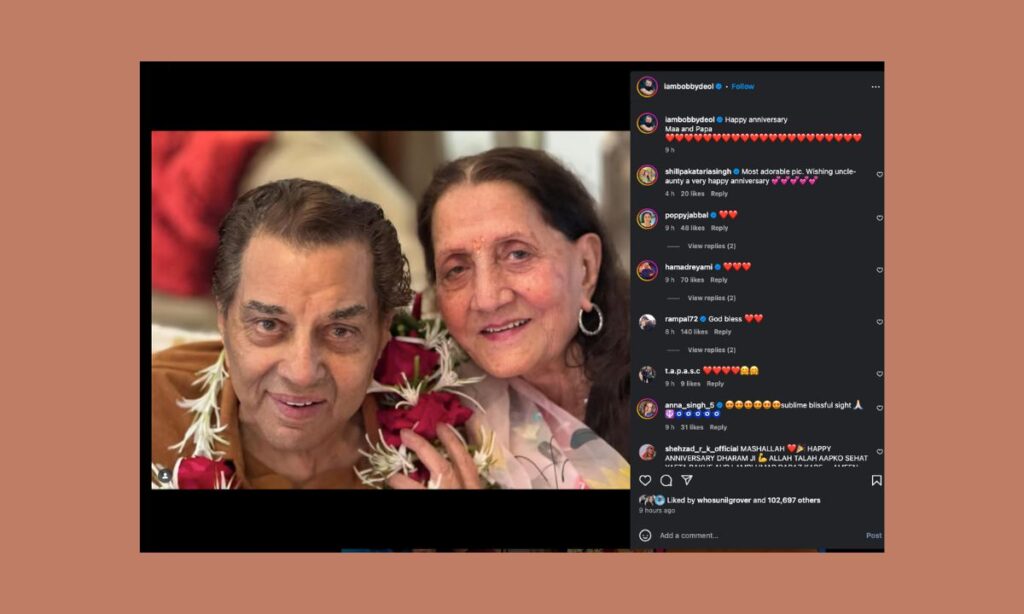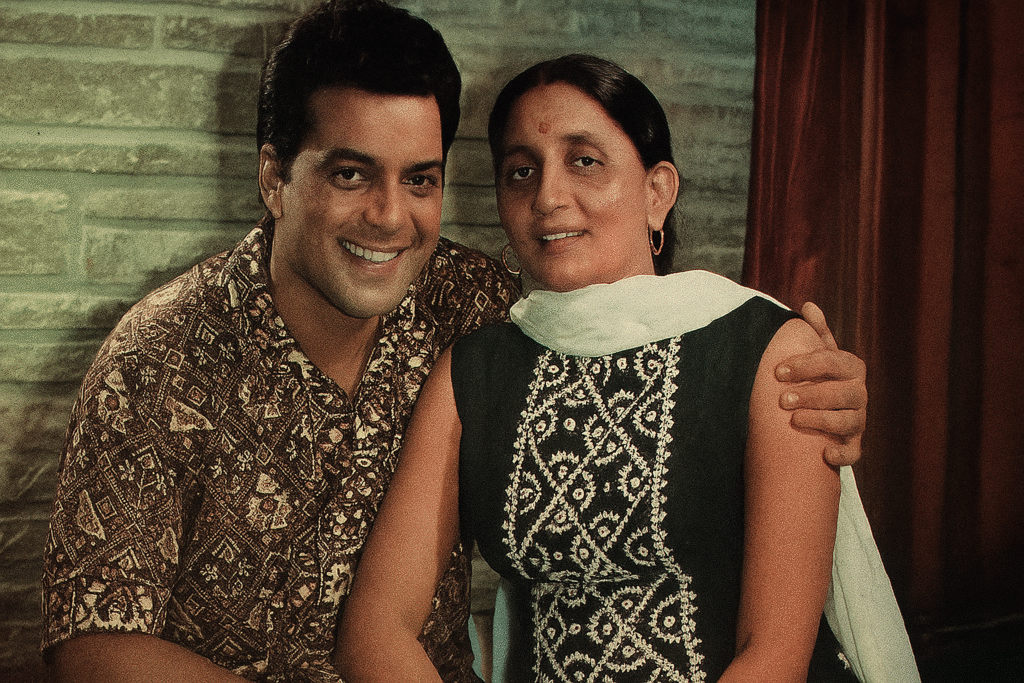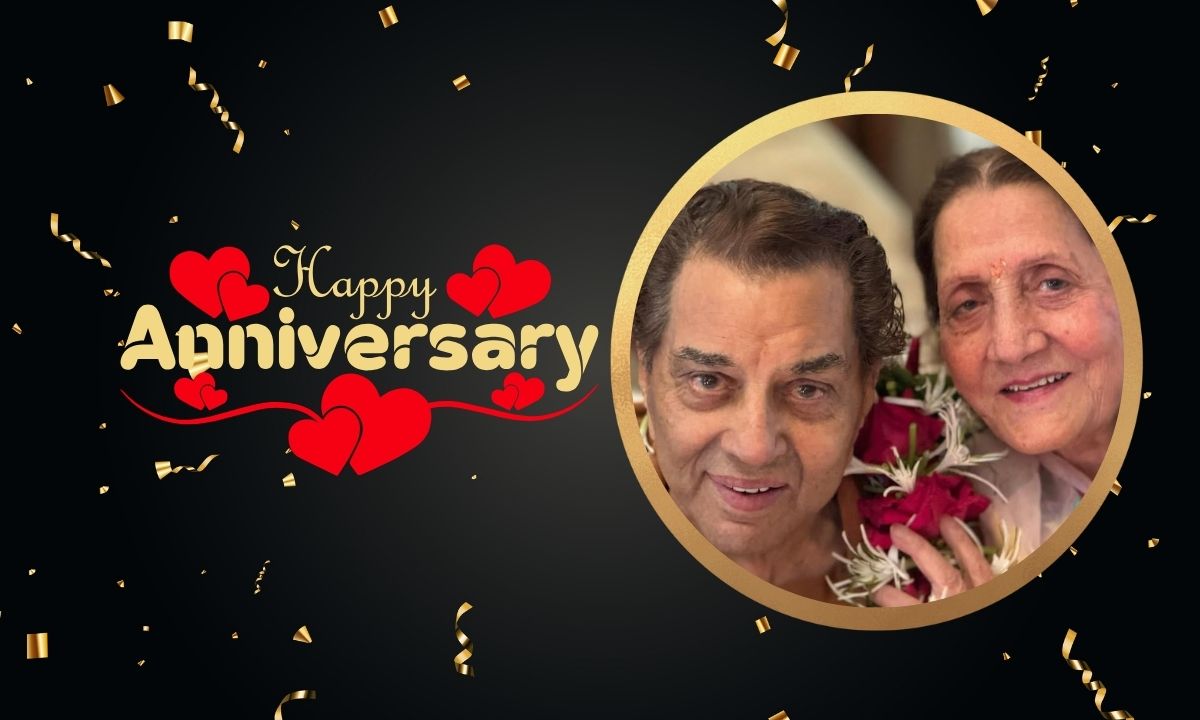How Dharmendra’s invisible first wife built an unbreakable marriage in an industry of spotlights — and why a single photo reveals more than we imagined.

The Photo That Broke the Internet (But Not Her Silence)
The black-and-white image is unassuming at first glance: A young Dharmendra, years before the “He-Man” stardom, stands beside a woman in a crisp Punjabi salwar-kameez. Her gaze is steady but distant; his hand rests lightly on her shoulder. Shared by their son Bobby Deol on their 71st wedding anniversary, this previously unseen photograph went viral not for its glamour, but for its startling rarity. In an industry built on visibility, Prakash Kaur chose near-total invisibility—making this glimpse into her world a cultural event. As film historian Bhawana Somaaya notes, “This isn’t just a family album entry. It’s a relic from a parallel Bollywood universe where stardom had a silent counterweight.”

The Radical Power of Invisibility
When Dharmendra married Prakash Kaur in 1954, Bollywood operated under unwritten rules: Stars were marketed as eligible fantasies. Marriages? Hidden. Raj Kapoor concealed his union; Dev Anand never officially acknowledged his. But where others submitted to studio pressure reluctantly, Prakash embraced privacy as agency. While Dharmendra’s on-screen romances with Hema Malini and Shabana Azmi fueled gossip columns, Prakash raised their four children in Mumbai’s non-film circles—never photographed, rarely mentioned.
“Her invisibility wasn’t weakness—it was a strategic shield,” argues sociologist Dr. Nandini Sardesai. “In refusing the spotlight, she protected their family’s normalcy so Dharmendra could embody the larger-than-life ‘He-Man’.”
This contrasts sharply with today’s influencer culture, where relationships are content farms. Prakash’s silence feels revolutionary: 71 years without a single interview, red carpet, or leaked scandal.
Anatomy of a 71-Year Marriage
How does a marriage survive seven decades in an industry where relationships combust under scrutiny? The Deols’ union defies easy categorization:
- The Unspoken Compromise: Prakash maintained their Mumbai home while Dharmendra lived on film sets. Their sons Sunny and Bobby grew up bridging these worlds.
- Surviving Public Romance: When Dharmendra married Hema Malini in 1980 (without divorcing Prakash), the media framed it as scandal. Yet Prakash’s dignified silence denied tabloids ammunition. As Bobby’s tribute implies, the family navigated this with mutual respect.
- The Data Point: Less than 0.1% of global marriages cross 70 years (UN Population Division). Their endurance speaks to resilience beyond romance—a partnership rooted in shared values, family, and profound mutual space.
Psychologist Dr. Shelja Sen observes: “Longevity in marriage often hinges on managing separateness as much as togetherness. Their structure—separate homes, united family—was unconventional but clearly effective.”
Bobby Deol: The Son Bridging Two Worlds
Bobby’s Instagram tribute—“Your blessings and values are my greatest strength”—holds layered significance. His career resurgence (Animal, Ashram) parallels this embrace of roots. Where Dharmendra embodied rustic masculinity, Bobby’s recent roles explore vulnerable masculinity—a shift perhaps nurtured by the quiet strength of his mother’s legacy.
By sharing the photo, Bobby performs a delicate act: honoring his mother’s privacy while acknowledging her foundational role. “He’s using modern tools to pay homage to an anti-modern choice,” notes film critic Anupama Chopra.
Why Prakash Kaur’s Story Captivates 2024
In a world oversharing on TikTok, Prakash’s lifetime of silence sparks fascination:
- Privacy Backlash: As Gen Z retreats from social media (35% reduce usage per Pew Research), her choice feels newly aspirational.
- Longevity as Myth: In an age of disposable relationships, 71 years seems heroic.
- Feminist Rethink: Were her choices oppressive or empowering? The answer may lie in Bobby’s reverence: “She defined power on her own terms.”
The Unanswered Questions (And Why They Matter)
The photo invites speculation it cannot satisfy:
- Who took it? (A relative? A studio photographer sworn to secrecy?)
- Why release it now? (A subtle reclaiming of narrative before histories harden?)
- How did Prakash view Dharmendra’s stardom? Her children’s fame?
“Some silences aren’t meant to be broken,” reflects film archivist Shivendra Singh. “The industry knew not to cross her boundary—that itself was her triumph.”
Conclusion: The Legacy of Silent Strength
Prakash Kaur’s story transcends Bollywood gossip. She crafted a fortress of normalcy in an industry that eats privacy alive—proving that some bonds grow strongest in stillness. As Dharmendra’s blockbusters faded from memory, their marriage persisted: a quiet counter-narrative to fame’s fragility.
In the end, Bobby’s photo reveals a profound truth: After 71 years, Prakash Kaur’s silence still speaks louder than any spotlight.

